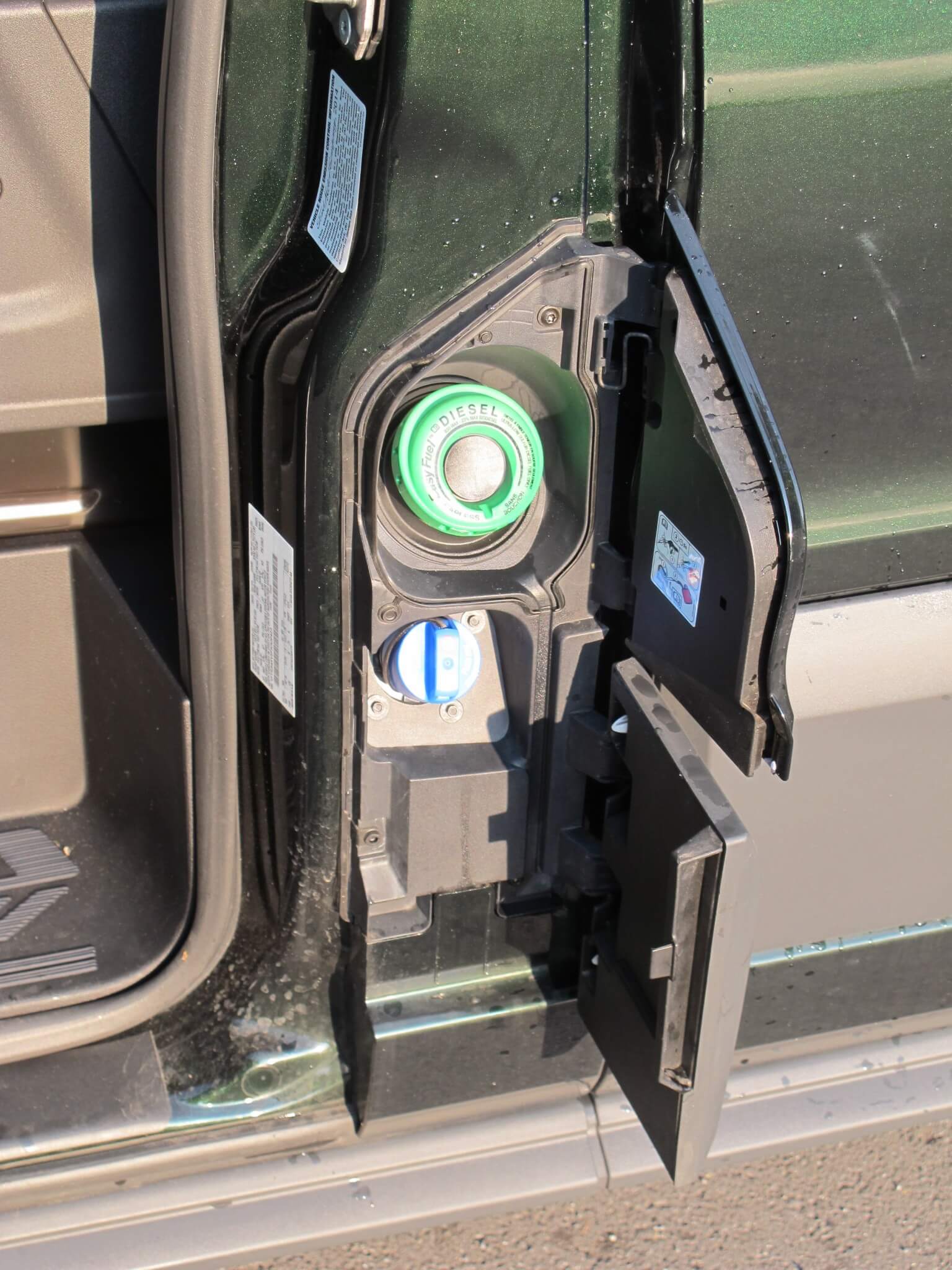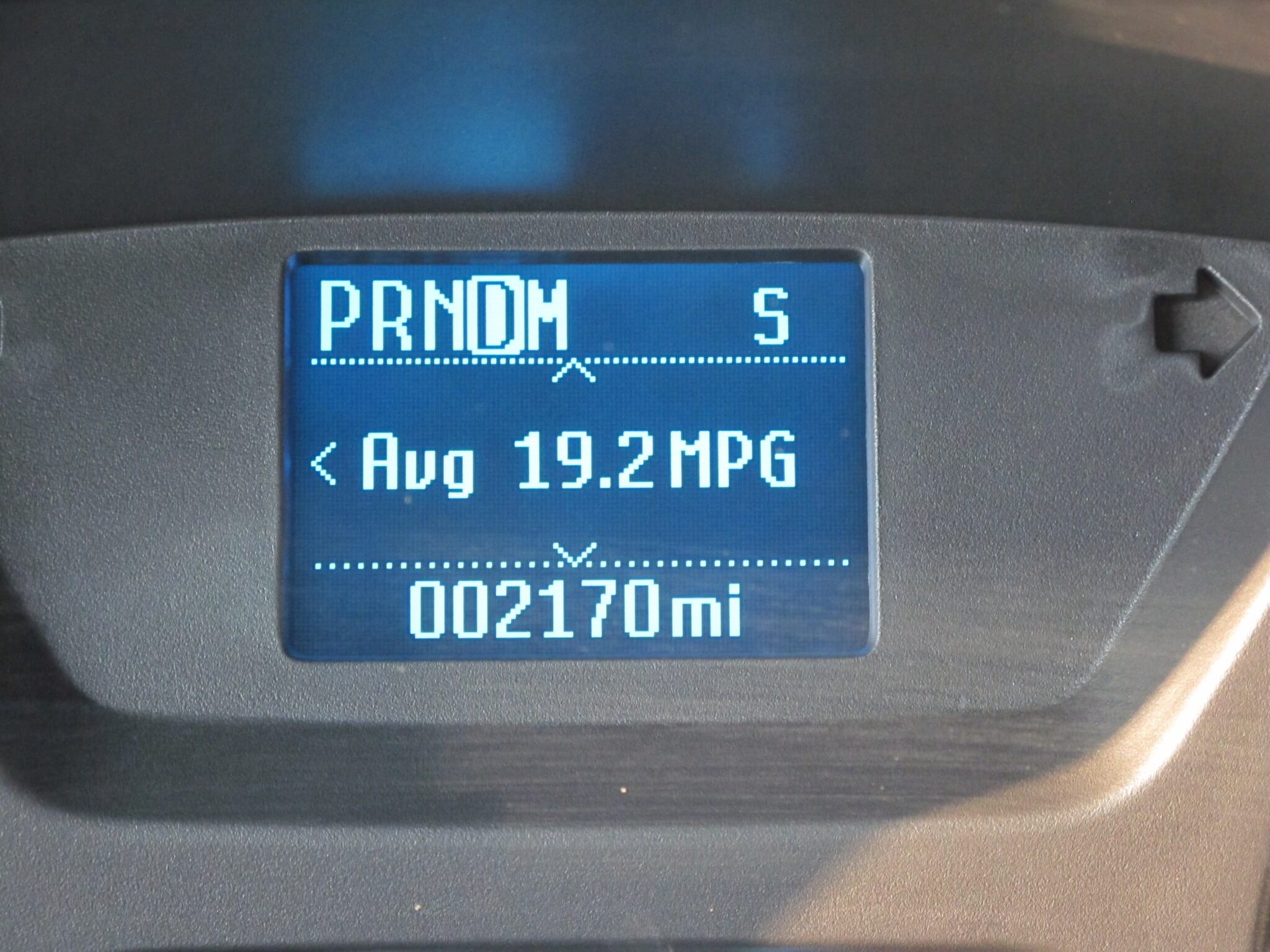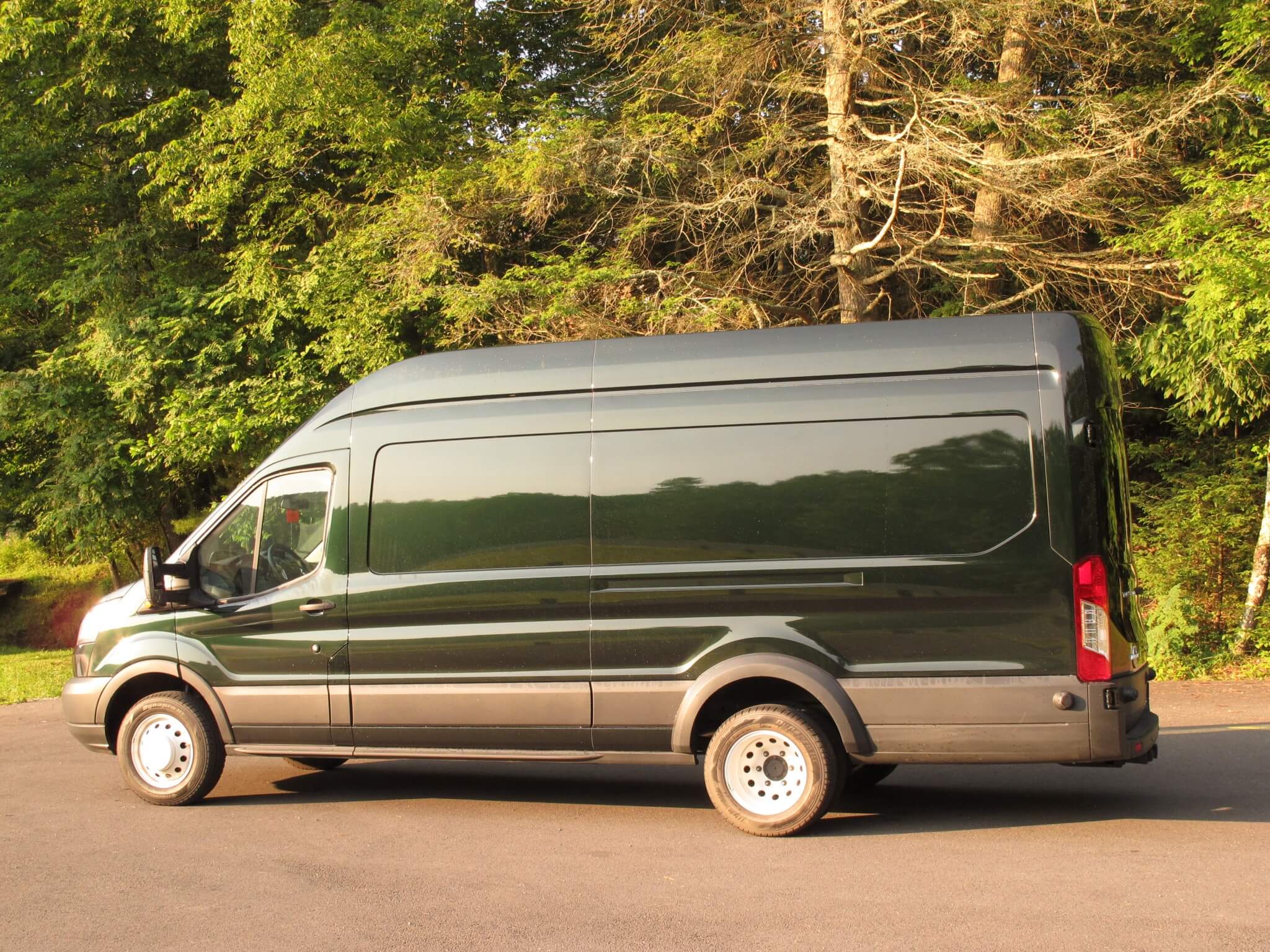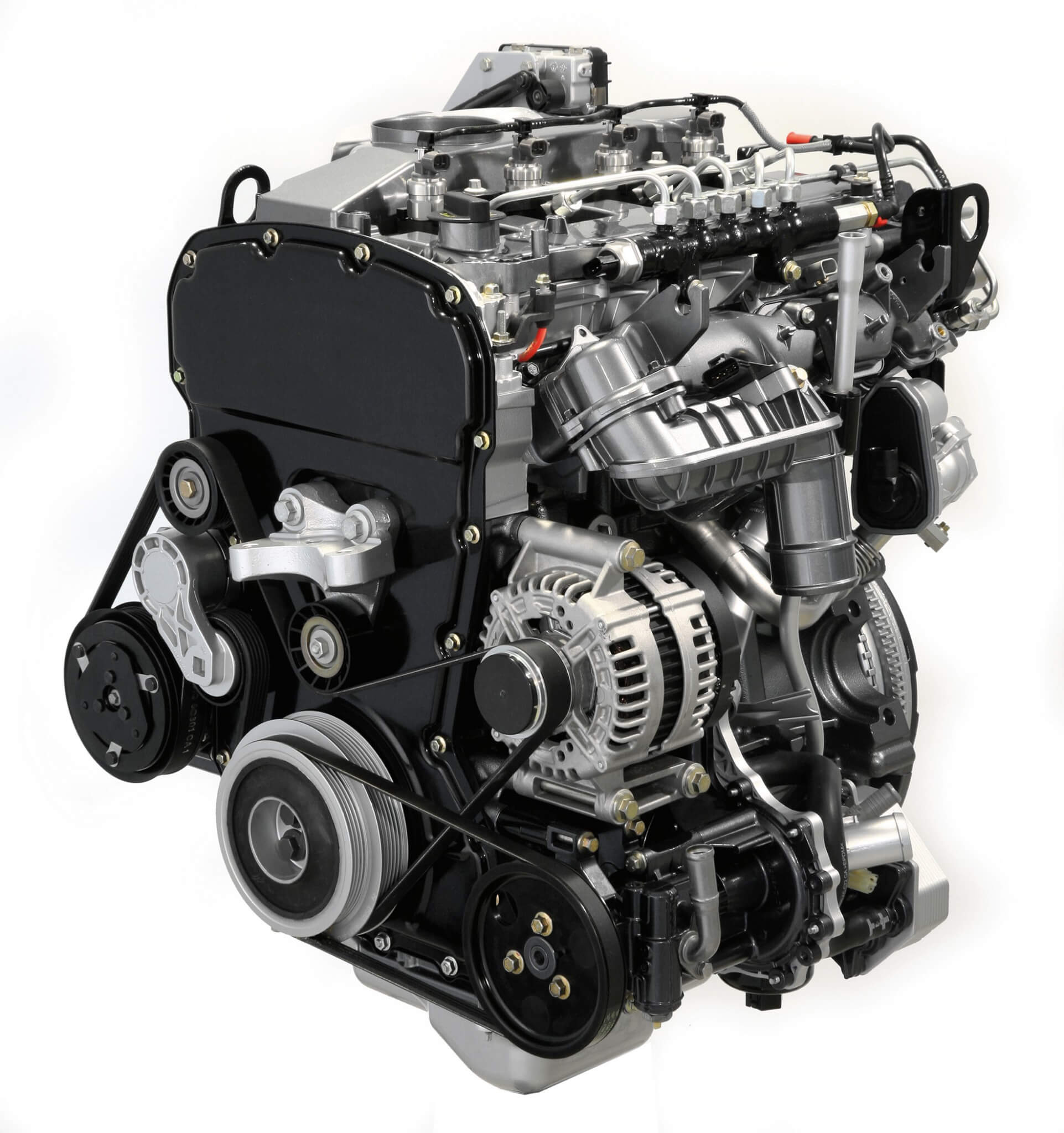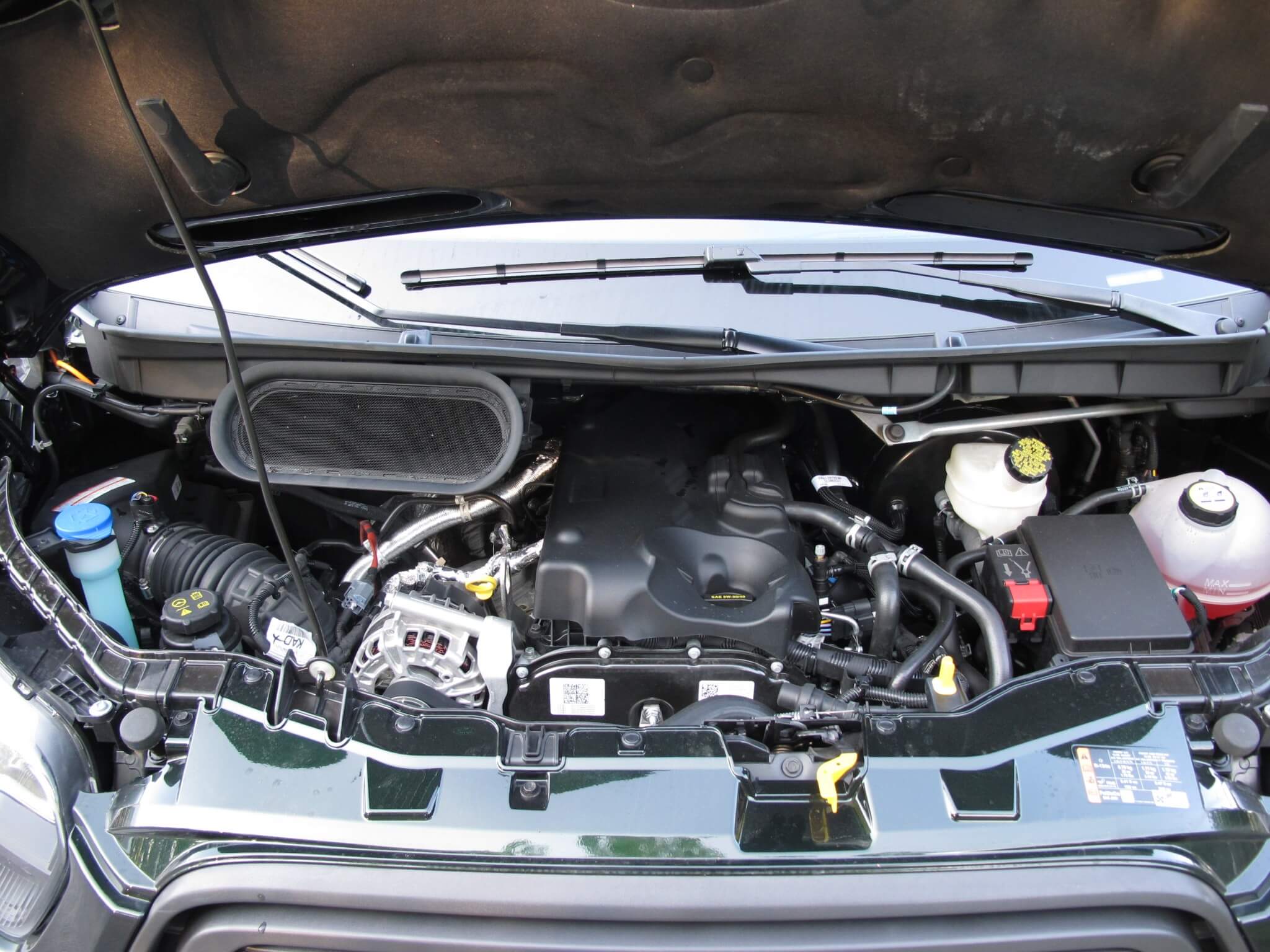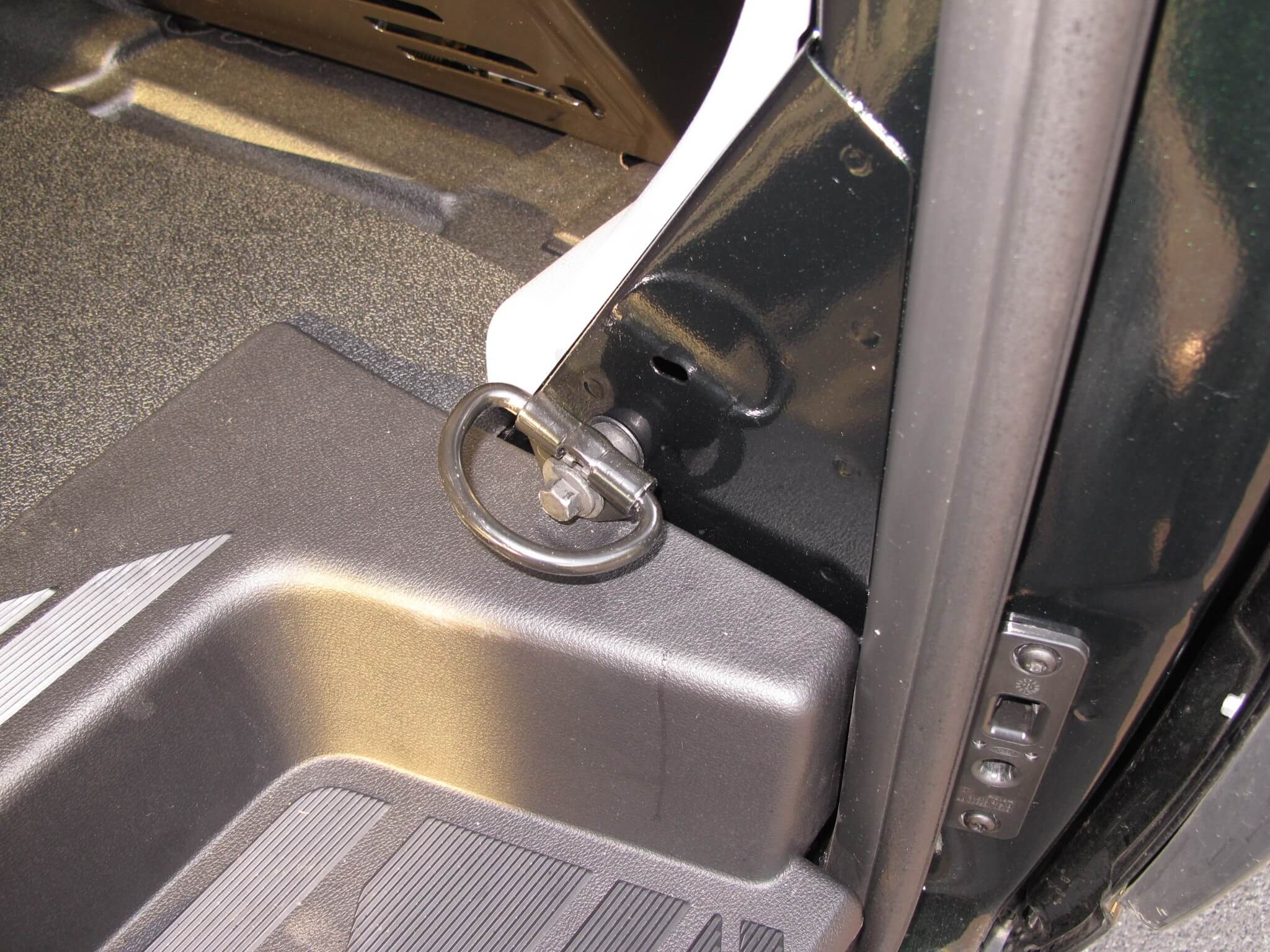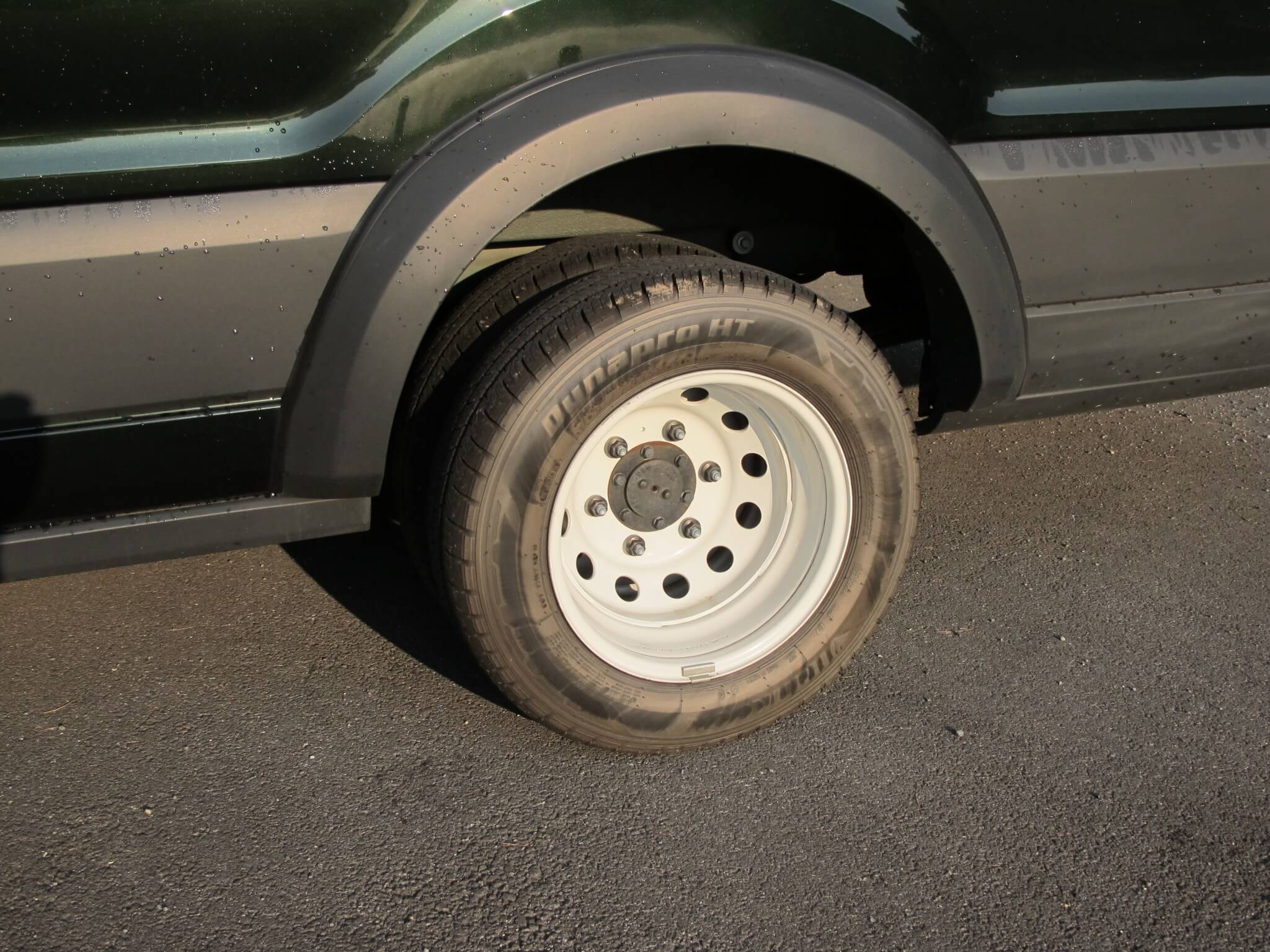First Drive: Ford Transit Van Diesel
Back in the 1970s, vans were big in sales, and custom vans were all the rage. The custom van craze has faded and now is mostly a memory, but vans are making a comeback in a big way. The new trend is for larger, Euro-style vans that are perfect for commercial use, motorhome and camper conversions, and even as toy haulers for motorcycles and ATVs, without the need for a trailer. One of these new fangled vans is the Transit from Ford. This new full-size van comes in two different wheelbases, three body lengths and three roof heights, unlike the Econoline or E-van that this author’s family owned back in the day. The E-van was only available with one basic roof height. All the roof height modifications were done by the aftermarket back then. Cargo space is up too with the Transit van, as much as 487 cubic feet. Ford claims it’s best in class on this front. While most Transit vans will likely be sold as cargo carriers, there’s also a passenger model that will seat up to 15.
The Transit van is available in several configurations from the factory; the most notable differences are in the wheelbase and roof height. The wheelbase is either 129.9 or 147.6 inches, respectively. There are also extended body lengths for the long wheelbase chassis. The roof height has three options: 83, 100 and 110 inches.

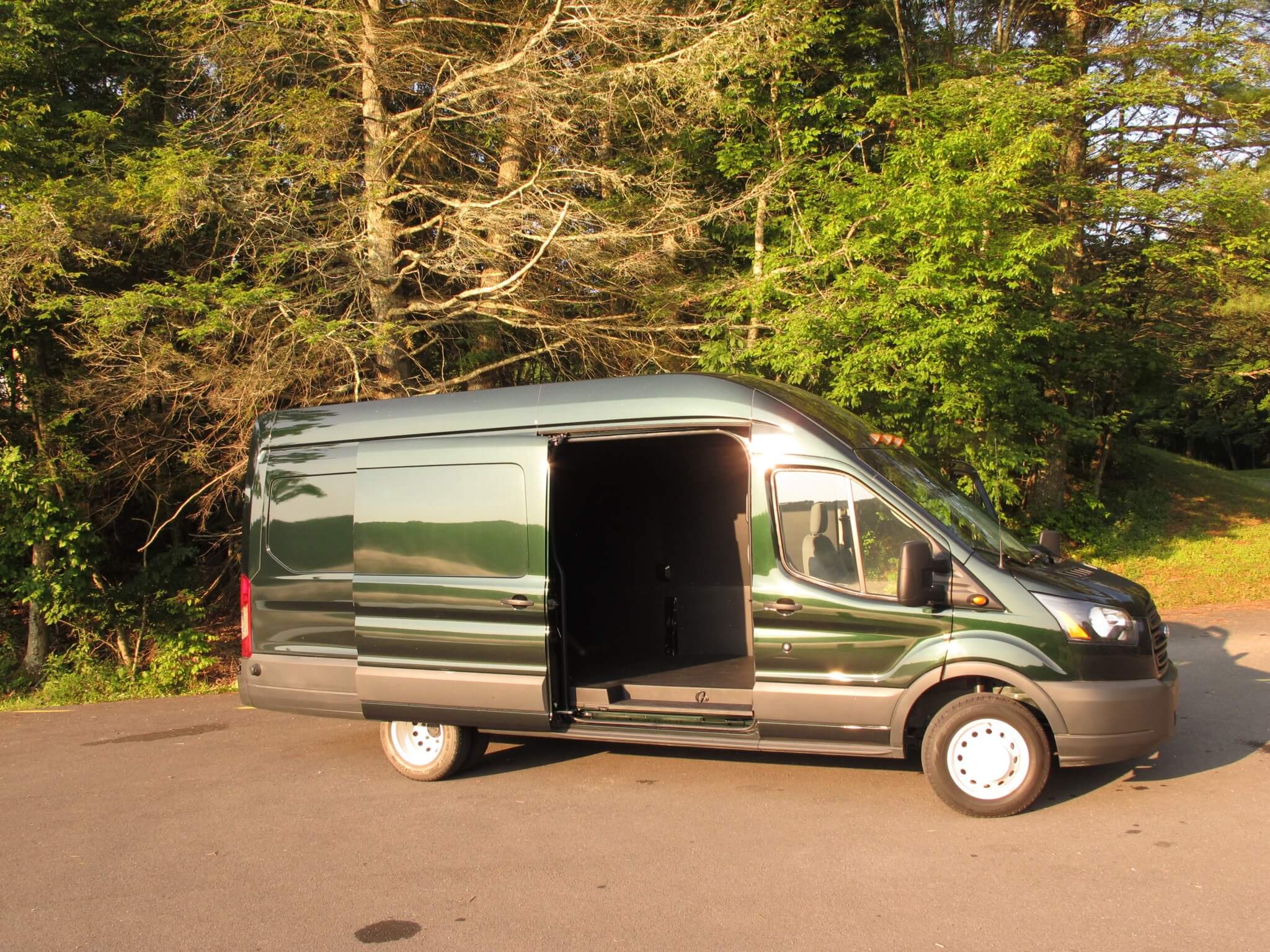
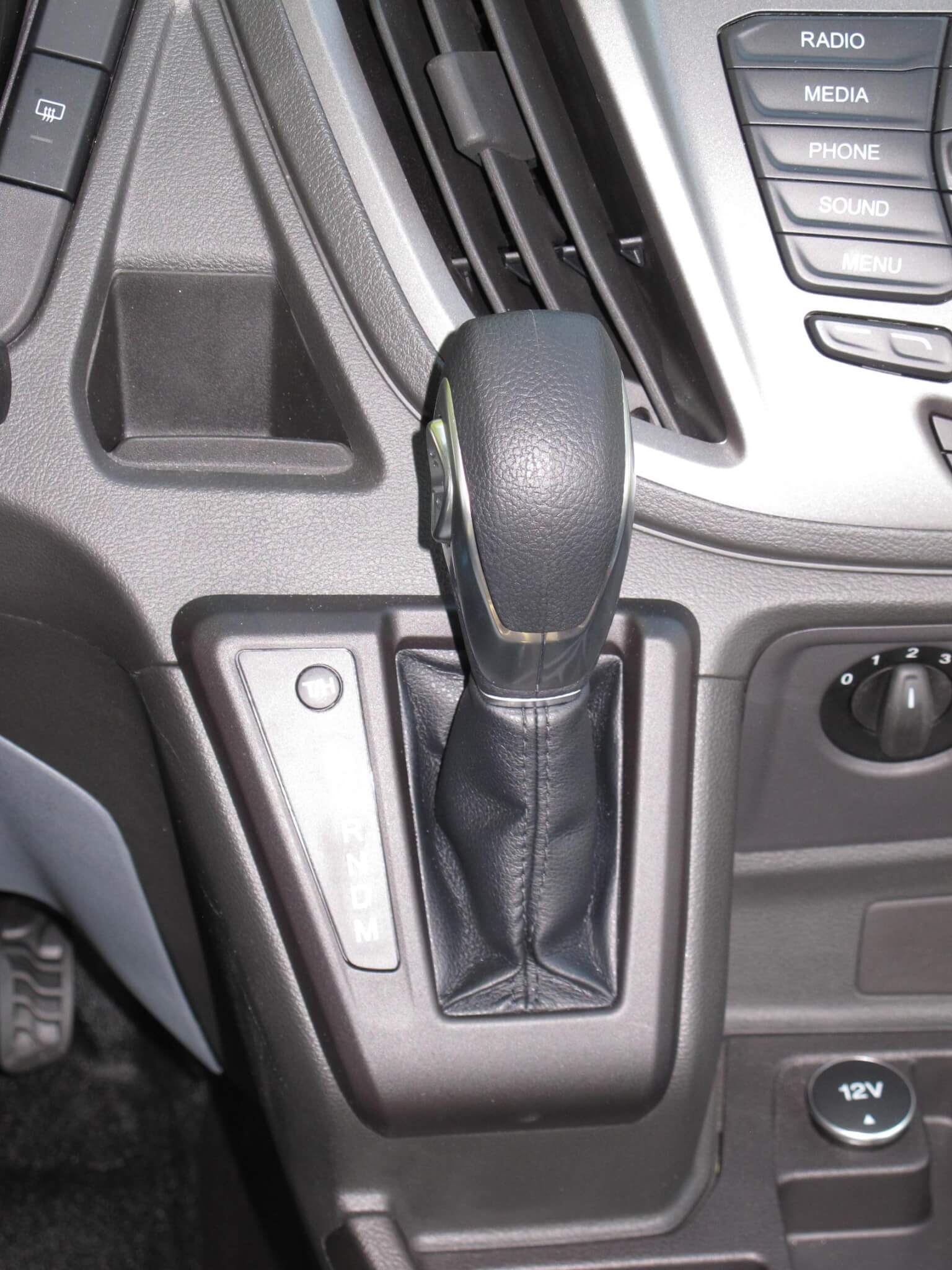
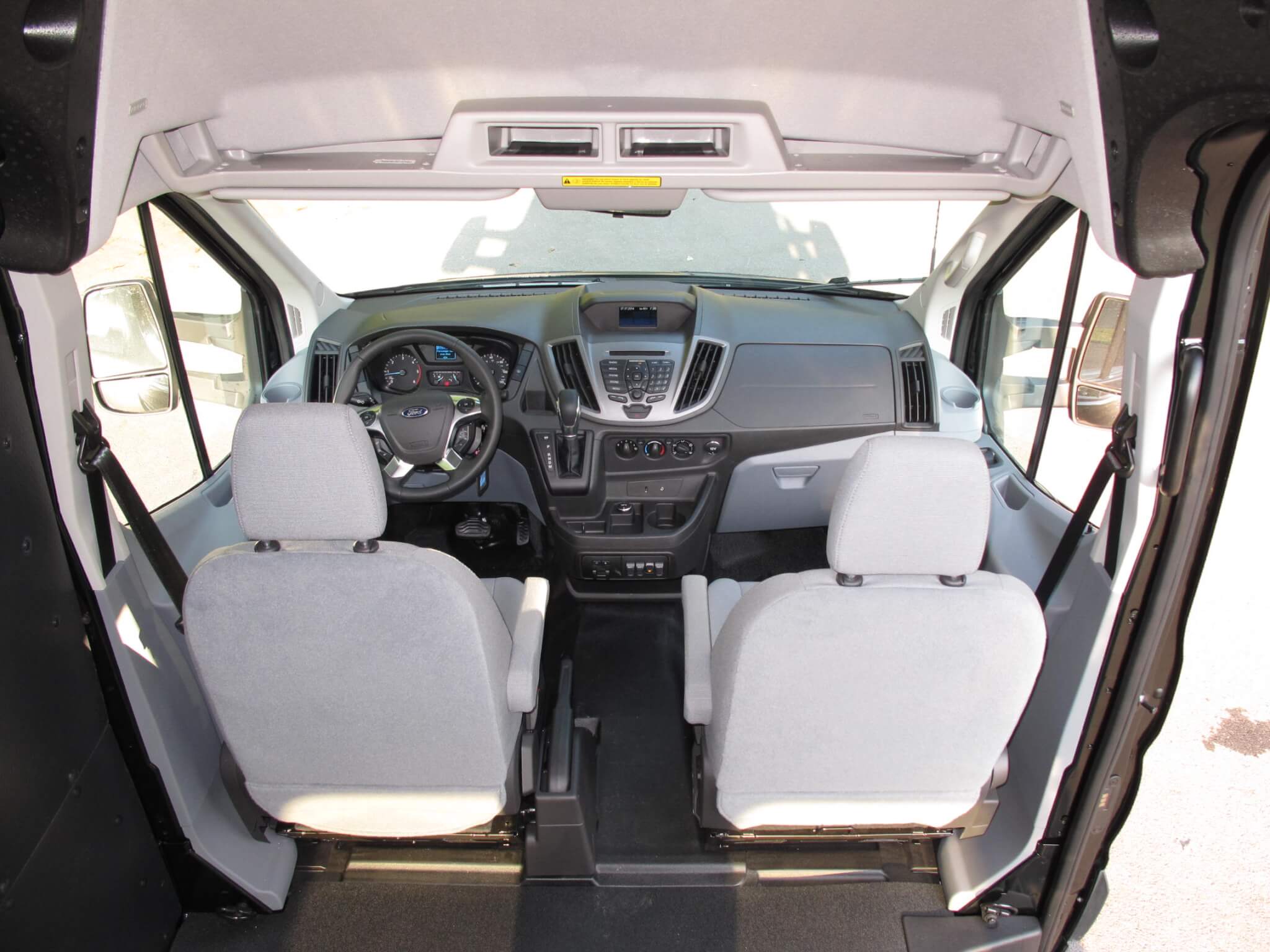
The Transit van has a gas engine standard, but the big news is the new diesel. This Power Stroke from Ford is a five-cylinder diesel that’s been in service outside the USA for more than a decade. The new Transit van gets the latest version and it produces a 3.2-liter, 195-cid inline mill that’s rated at 185 hp and 350 lb.-ft. of torque. Bore and stroke is 3.53 x 3.96 inches. Of course, this little diesel uses DEF fluid.
As with all the engine options, the diesel variant is backed by a six-speed automatic. The first gear is a reasonably low 4.17:1 and the unit has two over-drive ratios, 0.86:1 fifth and 0.69:1 sixth or final. The drivetrain is a conventional front-engine, rear-wheel-drive setup. As with the E-vans, no 4×4 option is available. Braking is handled by a four-wheel disc setup.
As for driving the new 2015 Transit van, we were only able to get seat time in the larger 3500 model, with the high roof and long wheelbase. In some ways, this was an advantage as any variant that’s smaller will surly handle better and perform quicker. We found the new Power Stroke five-cylinder diesel engine to be quick and responsive, considering the size of the van. Admittedly our tester was unloaded, but we compensated by finding some steep hills to climb. Overall, the large version of the Transit van we drove handled well, turned tighter that expected, and was easy to see out of, with good vision in the mirrors and out of the huge windshield. The Transit’s rear cargo doors can open up to 270 degrees for easy loading and unloading. In addition, the side door is larger than we remember the door being on our old E-van and the step-in height is lower too. The suspension is also different that the old E-van. The front is an independent Macpherson strut setup with a stabilizer bar. The rear is more conventional with a solid axle and leaf springs. Fuel capacity for all models is 25 gallons. DW
